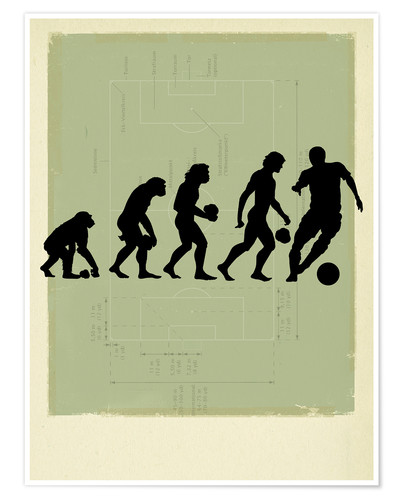Filippo Inzaghi, Ruud van Nistelrooy, Miroslav Klose and Ian Wright were all exceptional goal scorers during their careers. All of them for the most part ‘lived’ inside the box and kept defenders on their toes. Over recent years these types of players have been dying out at the elite level.
Why you might ask? Well, there are a plethora of reasons as to why this could be.
Spanish football has contributed a lot to the recent evolution of football with the recreation of the ‘False 9’. The ‘False 9’ tends to be a diminutive player with outstanding technical abilities and an eye for a pass which normally does not agree with the typical attributes of a goal poacher. Pep Guardiola is widely regarded as the manager who revitalised the position after putting Lionel Messi in the role, in the ilk of Matthias Sindelar in Austria’s Wunderteam of the 1930s.
Today the likes of Karim Benzema and Memphis Depay have excelled in this role. However, the best-known example of this to English eyes is Liverpool’s Roberto Firmino. Liverpool plays with two incredibly fast wingers who like to play very close to Firmino, allowing them to get on the end of his passes and regularly score.
Football goes through cycles. If you want to succeed it is almost now a requirement to have a striker who can do everything and just being in the box to put away chances is no longer enough. The two best strikers of the last ten years are probably Luis Suárez and Robert Lewandowski, who have made 167 and 103 assists respectively since the 2010/11 season, giving you some indication of what an elite level striker is in modern-day football.
Systems and managers have rapidly changed in recent times meaning players have to adapt their styles. Two players who have shown this, especially in the 20/21 season were Romelu Lukaku and Harry Kane. The current Spurs forward dropped into deeper spaces to collect the ball and show off his passing range, while Lukaku would do similar to relieve his side of pressure while helping them to advance quickly by coming in from the left with the ball at his feet to provide a pass for his strike partner- mainly Lautaro Martínez-, providing balance in Inter Milan’s 2 man strike force.
Many attacks now start with the goalkeeper passing the ball to his defenders. Similarly, to strikers, central defenders need to be able to pass and possess the technical ability. Having a centre-half with the desired skills comes at a premium these days. The likes of Lille’s Sven Botman and Wolfsburg’s Maxence Lacroix are great examples of this. In the 19/20 season, a season in which Botman did not play, Lille scored 1.25 goals per game which rose to 1.68 in their 20/21 Ligue 1 title-winning campaign, where he appeared in 37 league games.
Meanwhile, Wolfsburg added 13 goals to their goal tally with the arrival of Lacroix. Both are very capable of passing between lines or to their forward lines who can produce or score goals. Forward-thinking ability in centre backs is not just useful, but crucial in many situations, especially when under pressure.
Germans are typically known for being efficient and organised and ‘Gegenpressing’ plays into the stereotype very well. Pressing seems to be the new way forward and has been proven to pay off when done well. On the 14th August 2020, we saw an older and laboured Barcelona get beaten by Hansi Flicks’ Bayern Munich pressing machine. In that game, you could see how quickly football has changed over 10 years. Having a number 10 is no longer required, summarised in this quote from Jürgen Klopp “No playmaker in the world can be as good as a good counter-pressing situation.” One property of many pressing sides is the ability of their full-backs to get forward as teams can afford to commit a high number of players in wide areas, overwhelm teams and deliver the ball for the forwards.
Data and the focus on set pieces have become very important in recent years as technology in football has quickly advanced. Scandinavian football can be thanked for this change to football. FC Midtjylland managed to capitalise on the lack of focus put on set pieces by using a data-driven approach, meaning the side from Jutland have been taking advantage of their opponents' lack of set-piece analysis.
In the 2014-15 season Midtjylland won their first Danish Superliga title and scored 23 goals from set-pieces in the process. Midtjylland have and continue to employ kicking and throw-in coaches to help improve their fortunes from set-pieces. Some of these developments have come over to English shores with Brentford boss Thomas Frank implementing the use of throw-ins in his tactics, which we saw in Brentford’s second goal vs Arsenal in the opening game of the Premier League season.
Many managers are starting to take notice of the benefits of data and how you can use it in almost all aspects of the game to gain the upper hand. Younger managers are starting to take football in a different direction which could be one of the reasons why football now seems to be much more structured and press centric.

